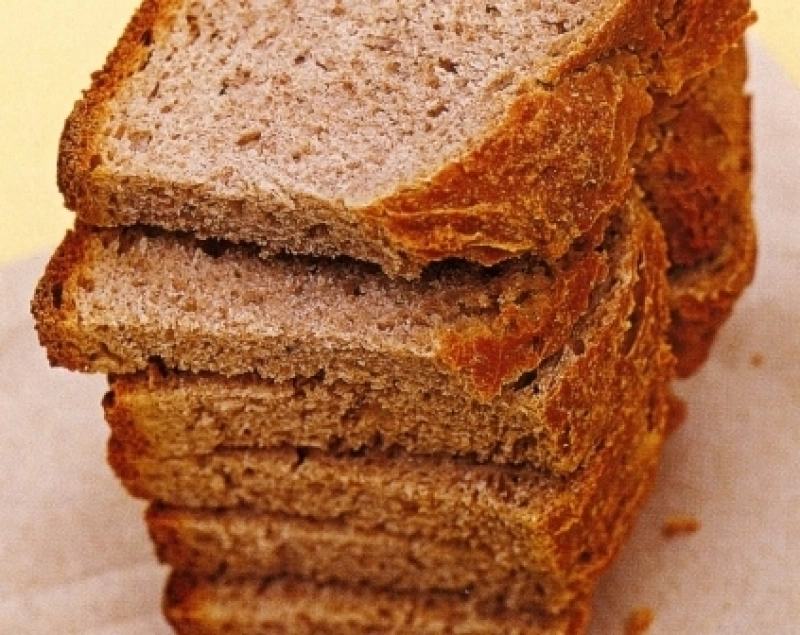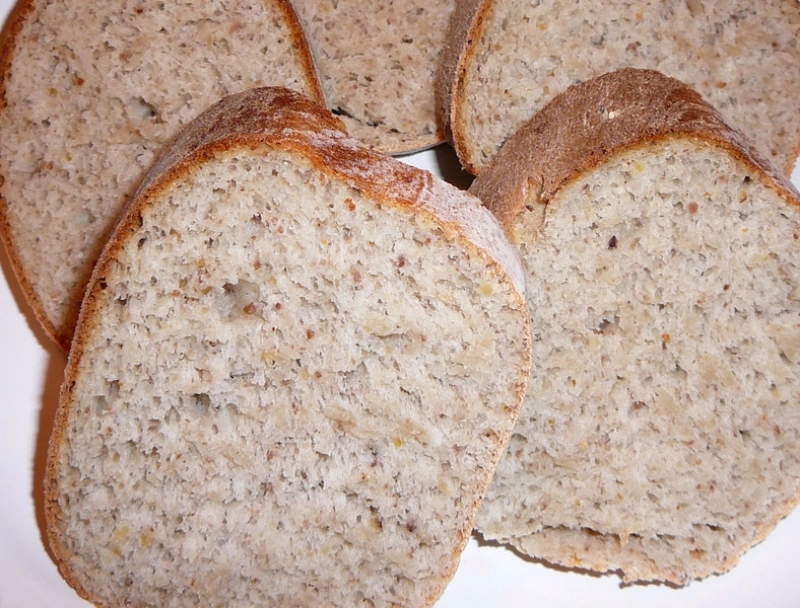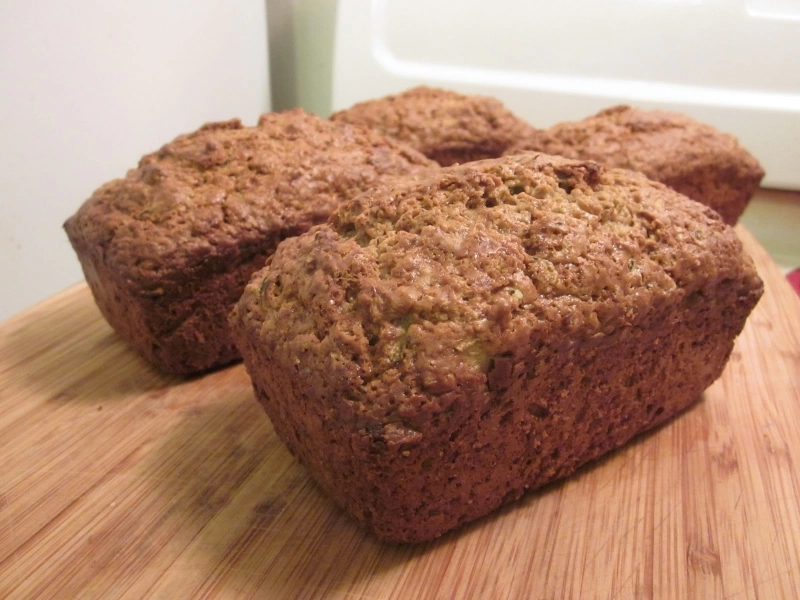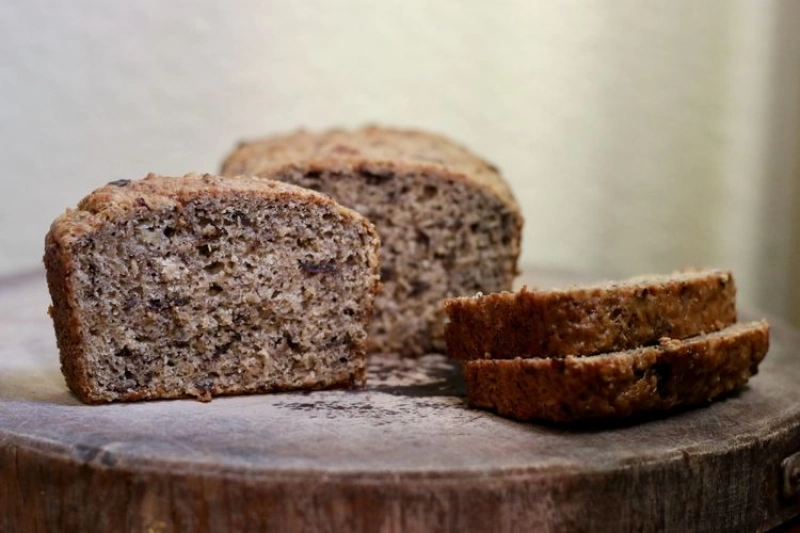Chestnut bread is a rustic, slightly sweet loaf made with chestnut flour, offering a nutty flavor and dense texture. It’s naturally gluten-free and pairs well with both savory and sweet toppings.

Chestnut Bread Recipe
This Chestnut bread recipe is a perfect accompaniment to soups, stews, or even as a standalone snack with a pat of butter or a drizzle of honey.
Rich in flavor and slightly dense in texture, chestnut bread Korean recipe is a wonderful addition to your baking repertoire, especially during the fall and winter seasons when chestnuts are in abundance.
This easy recipe combines chestnut flour, all-purpose flour, milk, eggs, and optional add-ins like chopped chestnuts or spices.
Perfect for all, chestnut flour bread recipe is a nutritious alternative to traditional bread, rich in vitamins and fiber.
Try these nutritious and popular recipes at home: Oreo Blondies, Almond Croissant, Biscoff Cake, Pistachio Ricotta Cake, and Caramel Cream Cheese Bread.
What Makes Chestnut Bread Special?
Chestnuts bread is unique because of its main ingredient: chestnut flour. This flour is naturally gluten-free and has a sweet, nutty flavor that makes it ideal for baking. The bread is often slightly denser than wheat-based breads, giving it a hearty and rustic feel.
It pairs beautifully with savory dishes like cheese and charcuterie, as well as sweet toppings like jam or chocolate. Korean Chestnut bread is also a great way to enjoy the health benefits of chestnuts, which are rich in vitamins, minerals, and antioxidants.
If you want to start your own Food Blog then read this: How to Start a Food Blog

Ingredients
To make a delicious loaf of chestnut bread, you’ll need the following ingredients:
- 2 cups chestnut flour
- 1 cup all-purpose flour (or gluten-free flour for a completely gluten-free loaf)
- 1/4 cup sugar (optional for a slightly sweeter bread)
- 1 tablespoon baking powder
- 1/2 teaspoon salt
- 1/4 cup olive oil or melted butter
- 1 1/2 cups milk (or a non-dairy alternative like almond or oat milk)
- 2 large eggs
- 1/2 cup chopped chestnuts (optional, for added texture)
- 1 teaspoon vanilla extract (optional, for a sweet note)
- 1/2 teaspoon cinnamon or nutmeg (optional, for added warmth and flavor)
How to make Chestnut Flour Bread
- Preheat your oven to 350°F (175°C). Grease a 9×5-inch loaf pan or line it with parchment paper for easy removal.
- In a large mixing bowl, whisk together the chestnut flour, all-purpose flour, baking powder, salt, and sugar (if using).
- In a separate bowl, beat the eggs and mix in the olive oil, milk, and vanilla extract. If you’re adding cinnamon or nutmeg, stir it into the wet ingredients.
- Gradually add the wet ingredients to the dry ingredients, stirring until just combined. Be careful not to overmix, as this can make the bread tough.
- Fold in the chopped chestnuts if using, ensuring they are evenly distributed throughout the batter.
- Pour the batter into the prepared loaf pan and smooth the top with a spatula.
- Bake for 45-55 minutes, or until a toothpick inserted into the center comes out clean. The top of the bread should be golden brown.
- Let the bread cool in the pan for 10 minutes before transferring it to a wire rack to cool completely.
- Slice and serve your chestnut bread with butter, honey, or your favorite spread. Enjoy it warm or at room temperature.

Tips for Perfect Chestnut Flour Recipes
- Use Fresh Chestnut Flour: Chestnut flour can go rancid quickly, so make sure to use fresh flour or store it in the refrigerator or freezer to extend its shelf life.
- Don’t Overmix: Overmixing the batter can lead to a dense loaf. Stir until just combined for the best texture.
- Adjust Sweetness: If you prefer a sweeter bread, increase the sugar to 1/2 cup or add a tablespoon of honey to the wet ingredients.
- Experiment with Add-ins: Consider adding dried fruits like raisins or cranberries, or a handful of chopped nuts like walnuts or pecans for extra flavor and texture.
Nutritional Benefits
Chestnut bread recipe is not only delicious but also nutritious. Chestnuts are lower in fat than other nuts and are a good source of complex carbohydrates, which provide long-lasting energy.
They’re also rich in vitamin C, potassium, and fiber. When made with chestnut flour, this bread is naturally gluten-free, making it a great option for those with gluten sensitivities.

Conclusion
Chestnut bread is a delightful and nutritious loaf that brings the rich, earthy flavor of chestnuts to your table. Whether you enjoy it with a savory meal or as a sweet snack, this bread is sure to impress with its unique taste and hearty texture. Plus, with its gluten-free and vegan options, it’s a versatile recipe that can cater to a variety of dietary needs. Give chestnut bread recipe a try this season and enjoy a slice of rustic, nutty goodness!
Best Recipes from our website
Greg Doucette Protein Ice Cream
FAQs
Can I make this Chestnut bread gluten-free?
Yes! You can make the bread entirely gluten-free by using a gluten-free all-purpose flour blend in place of the regular flour. Chestnut flour is already gluten-free, so just make sure all your other ingredients are as well.
Where can I find chestnut flour?
Chestnut flour can often be found in health food stores, specialty markets, or online. If you can’t find it locally, check online retailers for availability.
Can I use whole chestnuts instead of chestnut flour?
Whole chestnuts can be chopped and added to the batter for texture, but they cannot replace chestnut flour, which is a key ingredient in the recipe.
How should I store chestnut bread?
Store chestnut bread korean in an airtight container at room temperature for up to 3 days. For longer storage, keep it in the refrigerator for up to a week, or freeze slices for up to 3 months.
Can I make this Chestnut bread vegan?
Yes, you can make a vegan version by substituting the eggs with flax eggs (1 tablespoon ground flaxseed mixed with 3 tablespoons water per egg) and using a plant-based milk like almond or soy milk.
What does chestnut bread taste like?
The Bread Chestnut flour recipe has a sweet, nutty flavor with a slightly dense and hearty texture. It’s mildly sweet on its own, but can be made sweeter with the addition of sugar or sweet toppings.
Is chestnut bread good for sandwiches?
Chestnut bread is denser and more crumbly than traditional sandwich bread, so it’s better suited for pairing with spreads like butter or jam, or serving alongside soups and stews.
Can I add spices to the bread?
Absolutely! Spices like cinnamon, nutmeg, or even cardamom can enhance the flavor of chestnut bread and add warmth. Feel free to experiment with your favorite spices.